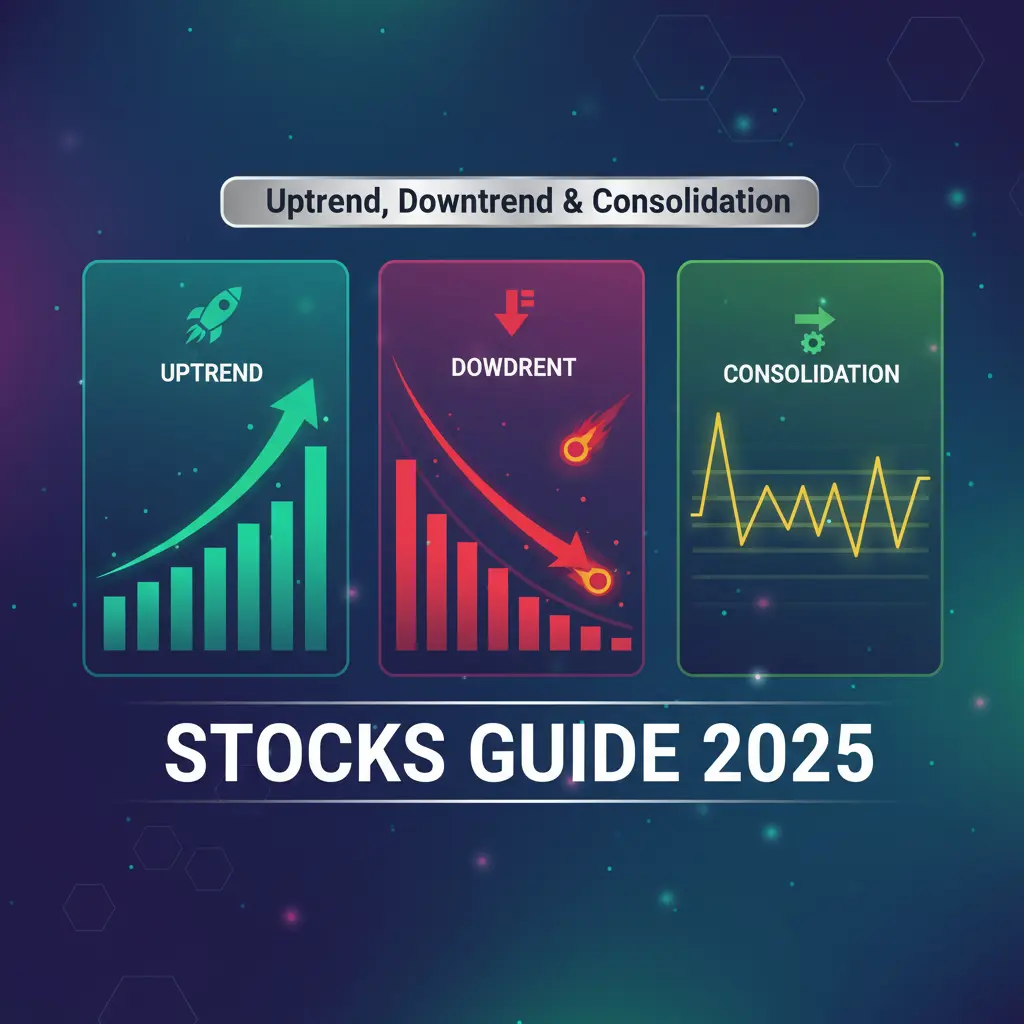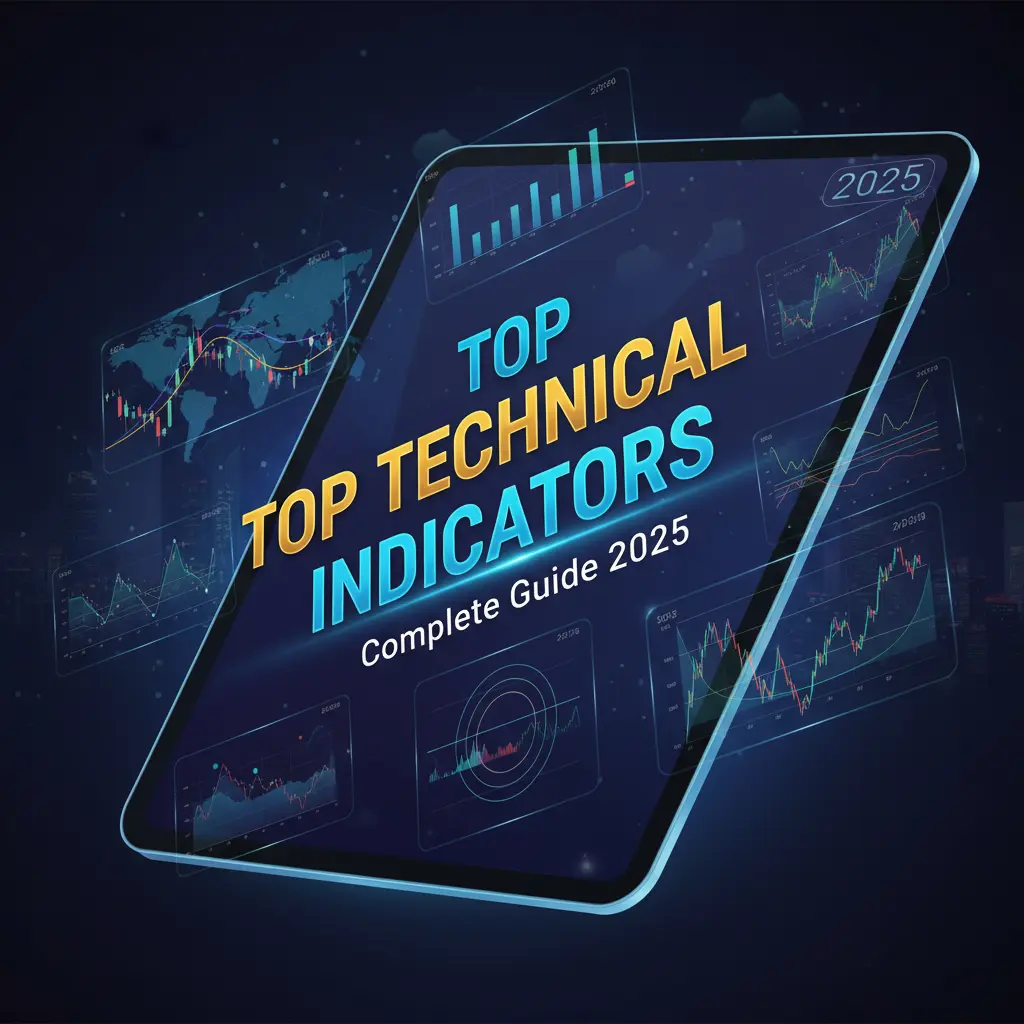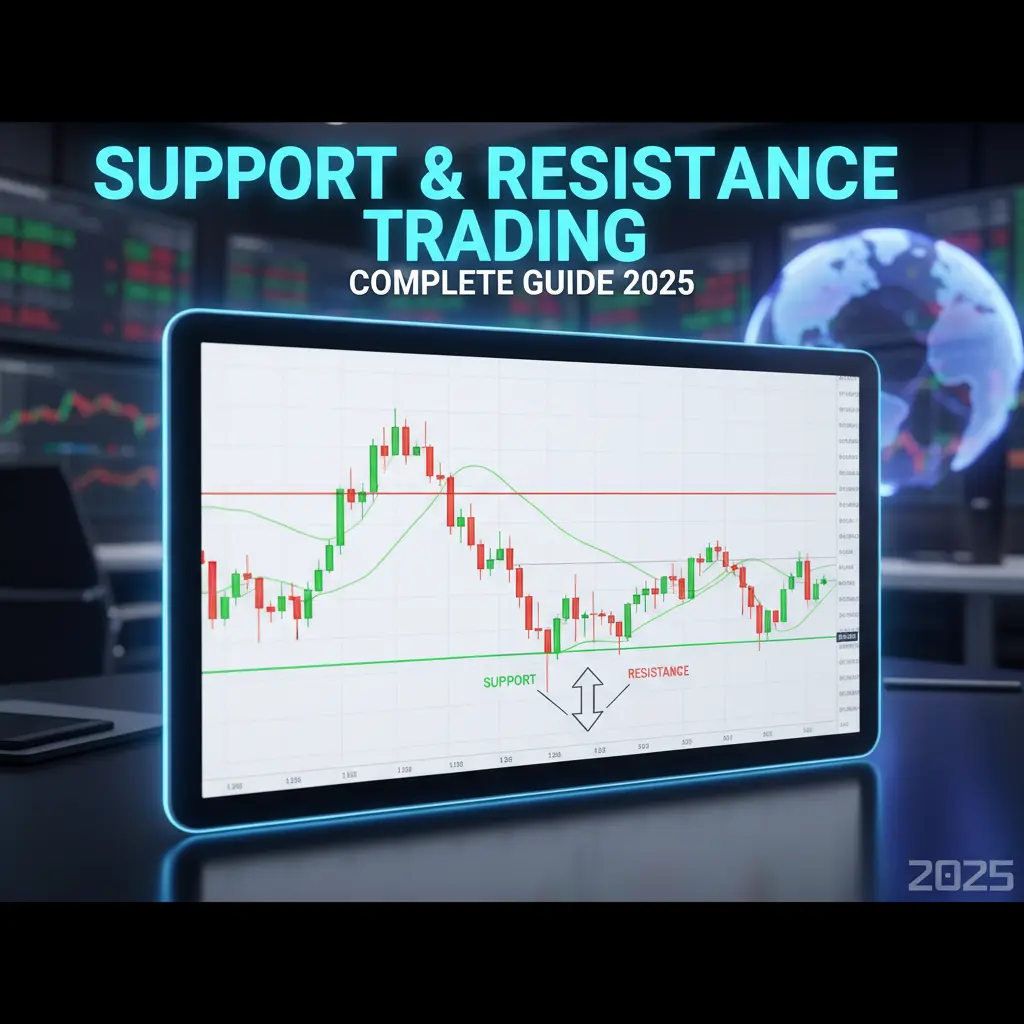

Introduction: The Power of Technical Indicators
Technical indicators are mathematical calculations based on a security's price, volume, or open interest that help traders identify potential trading opportunities. These indicators transform raw market data into actionable insights, helping traders make informed decisions about entry points, exit points, and market direction.
Think of technical indicators as your trading dashboard - just as a car's dashboard shows speed, fuel level, and engine temperature, technical indicators show momentum, trend strength, volatility, and market sentiment. When used correctly, they can significantly improve your trading accuracy and risk management.
Key Insight: No single indicator is perfect. The most successful traders combine multiple indicators to confirm signals and filter out false positives. Always use indicators in conjunction with price action analysis.
Types of Technical Indicators
Trend Indicators
Show the direction and strength of market trends. Examples: Moving Averages, MACD, ADX
Momentum Indicators
Measure the speed of price movements. Examples: RSI, Stochastic, CCI
Volatility Indicators
Show how much prices are fluctuating. Examples: Bollinger Bands, ATR
Volume Indicators
Analyze trading volume to confirm trends. Examples: OBV, Volume Profile
Trend Indicators
These indicators help identify the direction and strength of market trends, helping traders ride the momentum.
Moving Averages (MA)
Trend Direction & Support/Resistance
Moving averages smooth out price data to create a single flowing line, making it easier to identify the direction of the trend. The most common types are Simple Moving Average (SMA) and Exponential Moving Average (EMA).
MACD
Trend & Momentum Combined
The Moving Average Convergence Divergence (MACD) shows the relationship between two moving averages. It consists of the MACD line, signal line, and histogram, providing both trend and momentum signals.
Momentum Indicators
These indicators measure the speed and strength of price movements, helping identify overbought and oversold conditions.
RSI (Relative Strength Index)
Overbought/Oversold Levels
RSI measures the speed and change of price movements on a scale of 0 to 100. It helps identify overbought (above 70) and oversold (below 30) conditions, as well as potential trend reversals.
Stochastic Oscillator
Momentum & Trend Reversals
The Stochastic Oscillator compares a closing price to its price range over a specific period. It consists of two lines (%K and %D) that fluctuate between 0 and 100, indicating momentum and potential reversal points.
Volatility Indicators
These indicators measure the rate of price movements, helping traders understand market uncertainty and potential breakout points.
Bollinger Bands
Volatility & Price Channels
Bollinger Bands consist of a middle band (SMA) and two outer bands that represent standard deviations. The bands expand during high volatility and contract during low volatility, helping identify potential breakouts.
Average True Range (ATR)
Volatility Measurement
ATR measures market volatility by decomposing the entire range of an asset price for that period. It doesn't provide direction but shows how much an asset typically moves, helping with position sizing and stop-loss placement.
Technical Indicator Comparison
Understanding which indicators work best in different market conditions is crucial for successful trading. Here's a comprehensive comparison:
| Indicator | Best Market Condition | Primary Use | Strengths | Weaknesses | Reliability |
|---|---|---|---|---|---|
| Moving Averages | Trending Markets | Trend Identification | Simple, Reliable in trends | Lagging, Poor in sideways markets | High |
| RSI | Range-bound Markets | Overbought/Oversold | Excellent for reversals | Can stay extreme in trends | Very High |
| MACD | All Market Conditions | Trend & Momentum | Versatile, Multiple signals | Complex for beginners | High |
| Bollinger Bands | Volatile Markets | Volatility & Breakouts | Great for volatility analysis | False breakouts common | Medium-High |
| Stochastic | Range-bound Markets | Momentum & Timing | Excellent entry timing | Whipsaws in trends | Medium |
Position Size Calculator
Use this calculator to determine your optimal position size based on your risk tolerance and the stock's volatility (ATR).
Input Parameters
Recommended Position
Combining Indicators: Best Practices
Using multiple indicators together can significantly improve your trading accuracy. Here are proven combinations:
Trend + Momentum Combo
Moving Average + RSI
Use MA for trend direction and RSI for entry timing. Buy when price is above MA and RSI is oversold.
Volatility + Trend Combo
Bollinger Bands + MACD
Use BB for volatility and MACD for trend confirmation. Trade breakouts with MACD confirmation.
Momentum Confirmation
RSI + Stochastic
Use both momentum indicators to confirm signals. Reduces false entries in ranging markets.
Complete System
MA + RSI + Volume
Comprehensive approach: Trend + Momentum + Volume confirmation for high-probability trades.
Golden Rule: Never use more than 3-4 indicators at once. Too many indicators create "analysis paralysis" and conflicting signals. Choose one from each category that fits your trading style.
Indicator Combination Example
Glossary of Technical Terms
Overbought
A condition where the price has risen too far too fast and is likely to experience a pullback.
Oversold
A condition where the price has fallen too far too fast and is likely to experience a bounce.
Divergence
When the price moves in opposite direction to an indicator, signaling potential reversal.
Crossover
When two indicator lines cross each other, often generating buy or sell signals.
Lagging Indicator
An indicator that follows price action (e.g., Moving Averages).
Leading Indicator
An indicator that attempts to predict future price movements (e.g., RSI).
Volatility
The rate at which the price of a security increases or decreases.
Momentum
The rate of acceleration of a security's price or volume.
Conclusion
Technical indicators are powerful tools that, when used correctly, can significantly enhance your trading performance. Remember that indicators are derived from price action - they don't predict the future but rather help you understand current market conditions and probabilities.
The key to successful indicator usage is simplicity and consistency. Find 2-3 indicators that work well with your trading style and master them. Avoid constantly changing your indicator setup, as this leads to confusion and poor decision-making.
Final Wisdom: Technical indicators work best when combined with sound risk management, emotional discipline, and continuous learning. No indicator is perfect, but a well-tested system using multiple confirming indicators can give you a significant edge in the markets.
Other Financial Concepts

